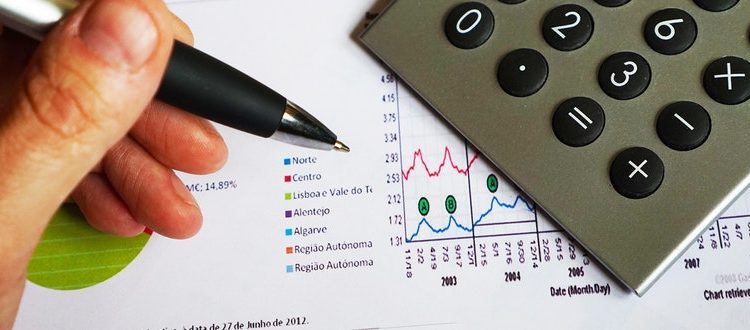Expressing Rates and Numbers in Scientific Notation

When you conduct a study that uses samples and chemicals, your methods section usually reports such measurements. Sometimes, when numbers, ratios, or rates that are very large or very small, it becomes important to display them in different formats to avoid cumbersome repetition of zeros.
Ratios vs Rates
Both terms express a comparison between two numbers. There is a slight difference based on what’s being compared.
A ratio expresses a relationship between two numbers regardless of the units. For example, you have five cats and seven pounds of cat food and you want to find out how much food there is per cat. Notice the word per, which usually means divided by. You can express the ratio of food to cats as follows:
7 (pounds of food) divided by 5 (cats) or 7/5. This can be expressed as 7:5 (note the colon) or as the decimal 1.4. Notice that the “units” are not expressed.
A rate compares measurements. It is somewhat like a ratio; however, the units of measurement carry through the calculation. It expresses the answer in numerals per unit. For example, traffic laws designate a maximum rate of speed. This rate is presented as miles (or kilometers) per hour. It is the maximum distance you should travel in 1 hour.
For example, you drive 150 miles in (per) 5 hours and you want to calculate your rate of speed. Again, the word per denotes division. The rate of speed would be the number of miles in 1 hour as follows:
150 miles divided by 5 hours or 150/5 = 30 miles per hour.
A unit rate is reduced to the number divided by one. At this rate, it took you 5 hours to drive 150 miles.
How is this helpful? Say that you have an experiment that calls for 5 grams of X for every (per) 7 liters of Y. In your experiment, you have only 3 liters of Y. You must first calculate the unit rate to then calculate how much X to use:
5 grams (g) divided by 7 liters (L) = 0.71 g/L.
For your experiment, simply multiply the unit rate by the number of liters (L):
0.71 g/L × 3 L = 2.14 g
The units, in this case, cancel each other and you are left with a measurement of 2.14 g for your experiment.
Expressing Large and Small Numbers
In scientific studies, we often use very large or very small numbers to denote precise measurements. Although we talk about “big” and “small” numbers, what we really mean is the magnitude of these numbers.
For example, researchers in physics must express numbers related to the smallest elementary particle and the vastness of the universe. In geology, we speak of the earth as being several millions of years old. In chemistry, we often refer to atomic mass units (AMUs), very small numbers that express 1/12 of the mass of a carbon 12 atom! How do we express such magnitudes without using all those zeros before and after the decimal?
Scientific notation decreases the number of zeros and makes the magnitude of a number more understandable. It uses 10 raised to a positive or negative power, depending on the number of places before or after a decimal point. The exponent is expressed as a superscript numeral (e.g., 103). For example, the following is a negative number:
1.0 AMU = 0.00000000000000000000000000166 kilograms (Kg).
We change the whole number into a decimal and use the power of 10 to denote the magnitude expressed as:
1.0 AMU = 1.66 × 10-27 Kg.
The basics of scientific notation are as follows:
- 0 = 1.0 × 100
- 0 = 1.0 × 102
- 0 = 1.0 x 103
- 1 = 1.0 × 10-1
- 01 = 1.0 × 10-2
- 001 = 1.0 × 10−3
Note the placement of the decimal points. If the last example above were 0.00156 (1.56 × 10-3), the exponent would be the same. The position of the decimal dictates the exponent.
Significant Figures
Can you imagine what would happen if our measurements weren’t accurate? Would our efforts to explore outer space have ever happened? What would happen in a laboratory if we were off by only one decimal point when measuring rare compounds?
Still, we can only be as precise as our instruments and tools. We measure as precisely as possible and “round off” to the nearest whole number. For example, we might round the number 152 down to 150. We might round 158 up to 160. The general rule is that if number following the ones to be kept is less than 5, round down; if greater than 5, round up.
Significant figures refer to the remaining numbers (i.e., two for 150 and 160). If we had decimal points (e.g., 150.0), we would have four significant figures. This is important because a decimal point indicates more precision.
In performing calculations, the numeral with the least number of digits determines the number of significant figures. You would then round up or down before adding or subtracting but after multiplying or dividing. This can be confusing, but there are several online sources to help with these details.
The use of rates, ratios, scientific notation, and significant figures is very important in scientific writing. Be sure familiarize yourself with these terms and how to use them. Did you enjoy reading this post? Please share your thoughts by commenting in the section below.









